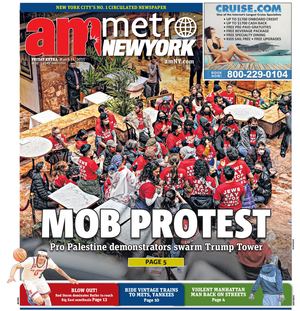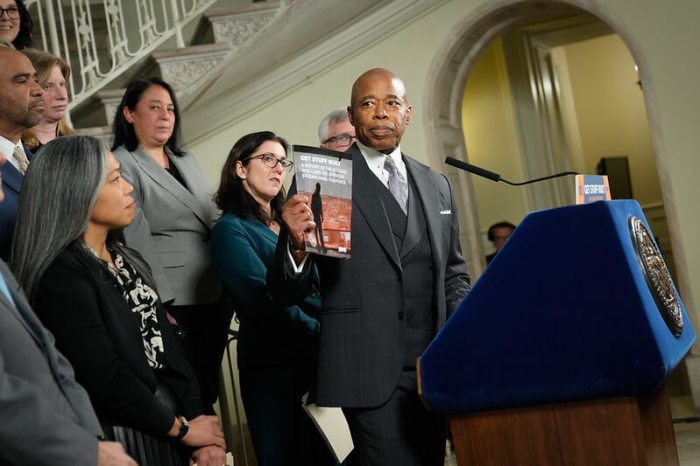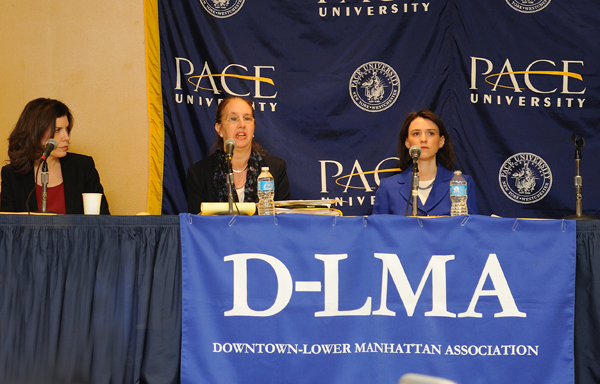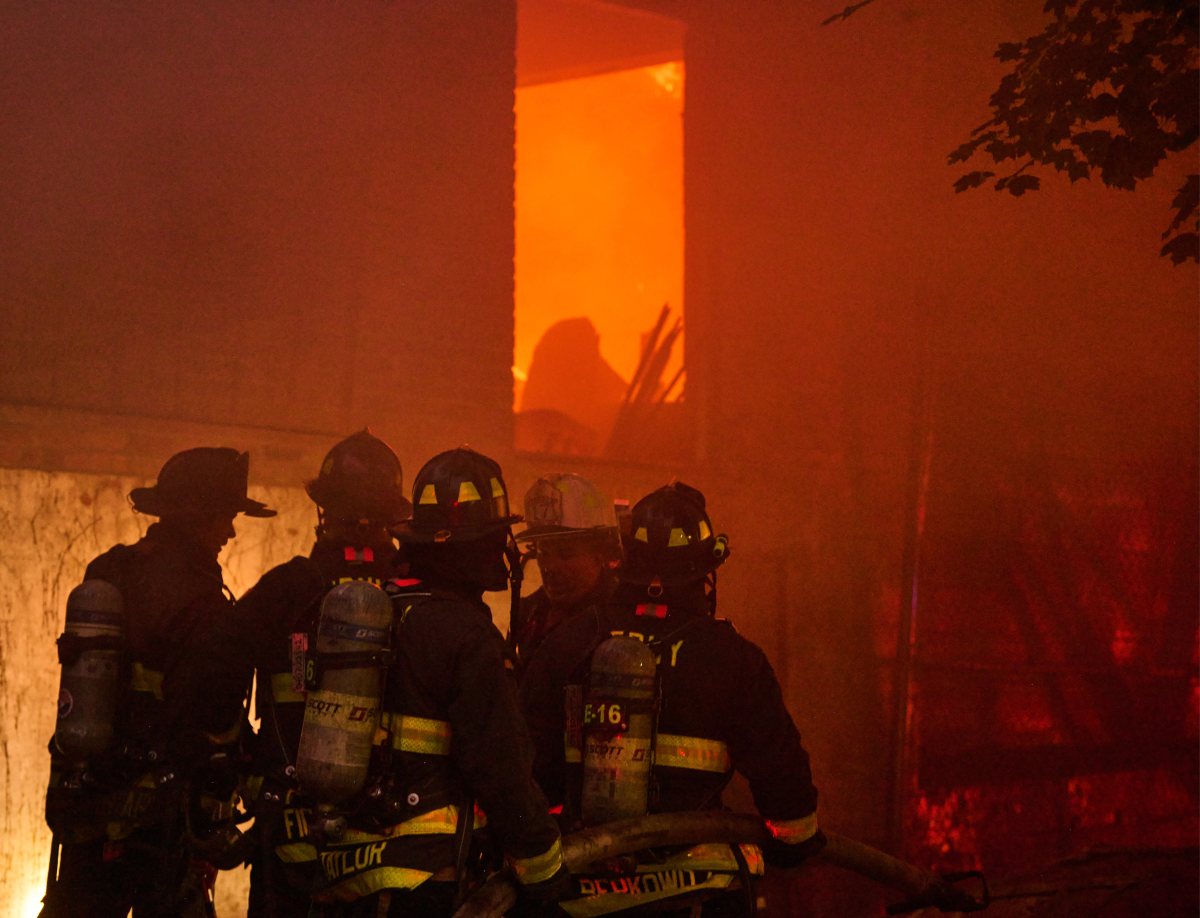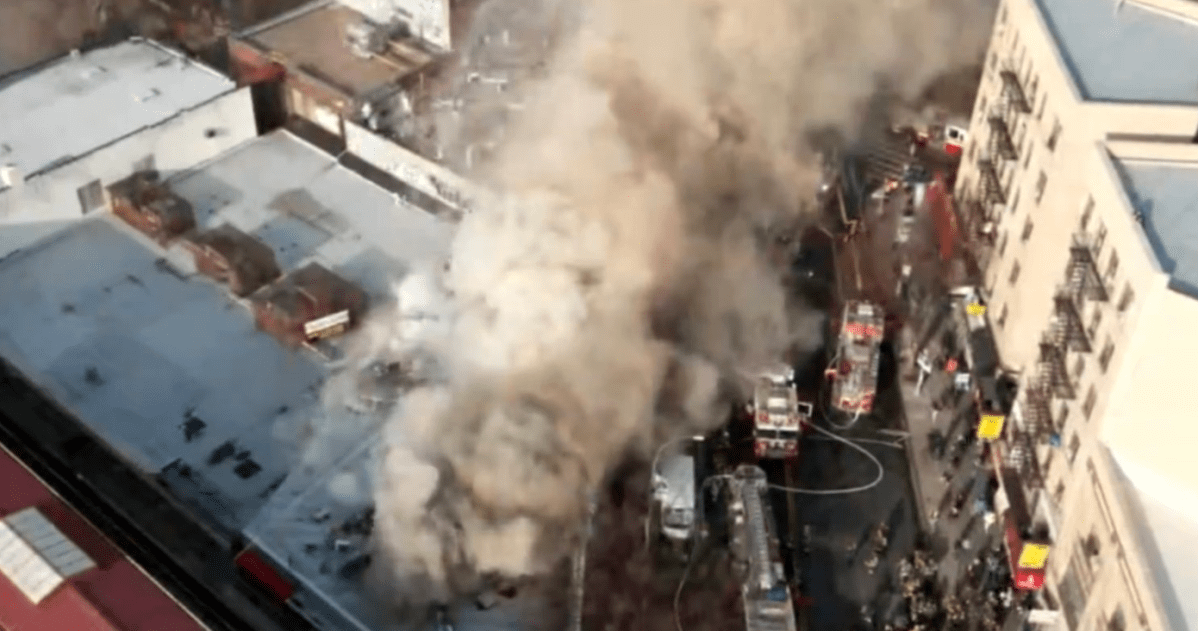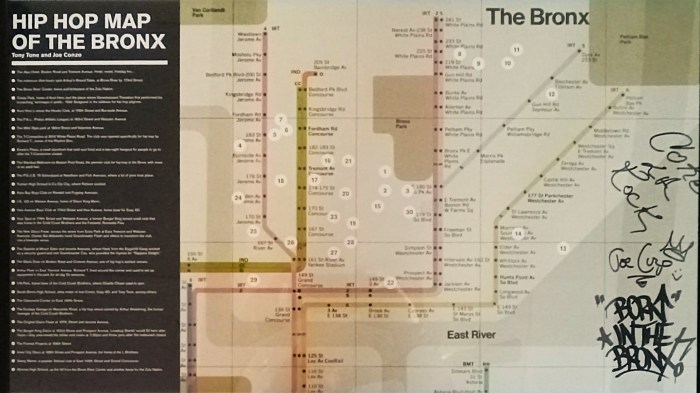Mayor Eric Adams signed an executive order Monday night that temporarily removes many of the usual barriers to build or site new homeless shelters in the Big Apple.
The order, prompted by the city’s search for spaces to house tens of thousands of migrants following the lapse of Title 42 last week, was met with criticism from City Council Speaker Adrienne Adams’ office. Her office argues that the mayor is relying too heavily on unilateral action in responding to the migrant crisis and that a comprehensive plan is needed. Furthermore, experts say the executive order could draw legal challenges for circumventing the process.
The executive order pauses key parts of the city’s land use process — known as the Uniform Land Use Review Procedure (ULURP) — for siting, leasing and building homeless shelters including holding public hearings and the multiple steps of voting and approvals required for most zoning decisions in the city. It was enacted Monday night and will be in effect for five days.
The action amended a previous executive order Adams signed last fall that allowed the city to circumvent the ULURP process for large-scale emergency facilities it has erected to house migrants, known as Humanitarian Emergency Response and Relief Centers (HERRCs).
When the mayor signed the order, he also extended a separate order that halted parts of the city’s long standing right to shelter law, which guarantees anyone seeking shelter a placement in the city’s system, he first signed last week. The order suspends part of the right to shelter law that stipulates homeless individuals must be placed in a shelter in a given timeframe.
Mayoral spokesperson Fabien Levy said in a statement that both executive orders were necessary as the city is looking to avoid having to house more migrants in school gyms across the five boroughs, which Adams said it’s planning to do this morning.
“In an effort to mitigate those risks and find room within our shelter system, the city has extended the temporary suspension of the policy surrounding timing for placements in shelters, as well as extended the suspension of certain ULURP rules to further expedite the siting, construction, and operation of additional facilities, thereby speeding up the process of bringing needed shelter space online,” Levy said.
Levy said the city has already seen over 65,000 asylum seeking migrants since April 2022, and is receiving over 500 people on some days, with those numbers expected to grow now that Title 42 — a COVID-19-era rule that restricted immigration into the country — expired. The city has filled its shelter system nearly to capacity, opened 150 emergency shelters and eight HERRCs, Levy said, but is still struggling to house more and more new arrivals.
City Council spokesperson Shirley Limongi, in a statement to amNewYork Metro, repeated a refrain from Speaker Adams, that the administration isn’t effectively working with the council to address the migrant crisis and executive orders are “no substitute.”
“Responding to a crisis requires multilayered government action that is collaborative and effectively managed, and executive orders are no substitute,” Limongi said. “The overuse of executive orders, with over 400 Emergency Executive Orders in the less than year-and-a-half of this administration, is concerning and raises questions. The way these orders have been rolled out, without communication to the Council and other stakeholders, is problematic.”
The siting and construction of new homeless shelters is one of the more contentious issues in local government, with both wealthier and lower income communities often opposed to getting new shelters in their communities. Lower income areas often argue they’re already overburdened by a disproportionate number of shelters compared to more well-off areas that don’t have any.
Jim Power, a partner at Kramer Levin — who advises private developers on the city’s land use process — said the mayor’s executive order will likely be challenged in the courts.
“Historically, siting decisions with respect to shelters have been some of the more controversial land use actions in the city, and some have led to lawsuits on the merits of the siding,” Power said. “Here, the administration, through this executive order, is changing the process and saying that the ULURP review procedure is not required. They’re taking the action, presumably to be able to get these facilities online more quickly, but it opens the door to legal challenges to the procedure or lack of procedure.”
Power said he’s not personally aware of any historical precedent for suspending the city’s land use process.
“To me, this was a rare and unusual step the administration has taken,” he said.
Legal challenges, Power said, likely wouldn’t come in response to the executive order itself but rather specific sitings the city will make under the modified rule.
“it’s probably unlikely that anyone would challenge the concept of avoiding ULURP,” he said. “It’s probably more likely that lawsuits would result when the actual siting decisions are made, and lawsuits would be more likely to come from neighbors and surrounding property owners.”
